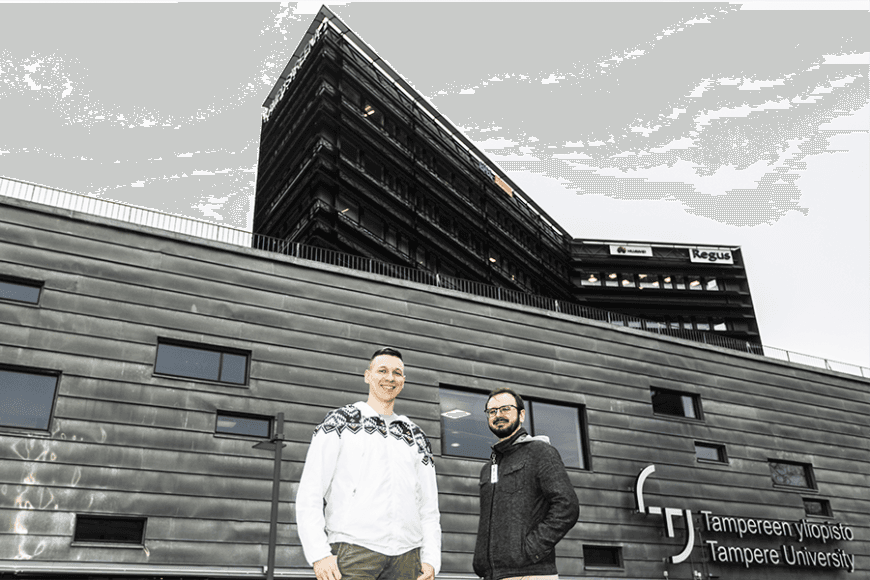World’s first non-cellular 5G technology approved internationally – Tampere University contributed to the standard development

The novel adaptable DECT-2020 NR technology will provide wireless connectivity in a wide range of scenarios, enabling both Ultra-Reliable Low Latency Communication (URLLC) and massive Machine-Type Communication (mMTC).
The commercial cellular 5G networks have been introduced to the consumer markets for the past couple of years. But until recently, the focus was on improving the data throughputs and latency.
“However, there is also a third part to 5G – massive Internet of Things (IoT), which will provide cost-efficient wireless internet connectivity for millions of low-power devices in the same network,” says Joonas Säe, a staff scientist in the Faculty of Information Technology and Communication Sciences.
While the cellular-based solution for truly massive IoT networks is still lacking from the markets, a non-cellular technology has now been officially included by ITU into the 5G family. DECT-2020 NR is a European contribution to the worldwide 5G standardization process, as it was first standardized last year by European Telecommunications Standards Institute (ETSI).
The key contributor to the new standard has been the close collaboration between the university and Wirepas, a Tampere-based IoT company located next to the university’s campus in Hervanta. Other members of ETSI (e.g. Nordic Semiconductor and Sennheiser) have also contributed to the standard development.
“It has been exciting to be part of this new technology development regarding 5G IoT solutions,” Säe says.
The new standard allows efficient and low-cost IoT for everyone
First, as a member of ETSI, Tampere University evaluated the new DECT-2020 NR standard for compliance with ITU 5G requirements called “International Mobile Telecommunications-2020” (IMT-2020). Later, the researchers from university’s wireless communications field have shown in a recent study that this new standard allows keeping multiple millions of devices connected while achieving approximately 60% more energy-efficient operation as compared to the traditional cellular topology with the same radio equipment.
“Keeping these massive amounts of devices connected while still allowing for energy-efficient latency-aware operation may open up a way for a plethora of new exciting IoT applications,” explains Roman Kovalchukov, a doctoral student behind the publication.
Being inherently based on mesh topologies and operating in an unlicensed spectrum, the new DECT-2020 NR standard enables anyone to run their own IoT networks.
“In a nutshell, the new standard has the following benefits: no middleman, no infrastructure, no subscription fees, free dedicated international frequency, dense and massive network capabilities, one-tenth of the cost of cellular and the lowest carbon footprint of large-scale networks,” Joonas Säe explains.
IoT solutions for different smart businesses
The race for the most suitable IoT technology has been going on for years, with many technologies trying to come at the top. The current IoT markets are quite fragmented with many proprietary solutions.
“The approval of the world’s first non-cellular 5G technology as part of the collection of 5G standards creates a strong foundation for setting up 5G IoT networks for different kinds of markets,” Säe continues.
“Smart cities, smart logistics, smart meters, and the whole Industry 4.0 concept, to mention a few,” Kovalchukov complements.
Tampere University also has its own test mesh network that utilizes Wirepas Mesh protocol.
“We have a test network to be able to use these networks also at the university, and the plan is to upgrade it with devices utilizing this new standard as soon as those devices are available in the markets. It will, of course, take a while when vendors are able to implement those,” Säe summarizes.
Further information
Roman Kovalchukov
tel. +358 40 3704055
roman.kovalchukov [at] tuni.fi
Dmitri Moltchanov
tel. +358 40 1981912
dmitri.moltchanov [at] tuni.fi
Joonas Säe
tel. +358 50 323 1108
joonas.sae [at] tuni.fi
Text: Joonas Säe and Anna Aatinen
Photo: Jonne Renvall





